Inpatient Treatments
Inpatients are usually sicker than outpatients. They may be recovering from recent surgery, or too ill to undergo surgery. Interventional radiologists’ skills at minimally invasive, image-guided procedures can be invaluable for these patients. We treat many different conditions in the inpatient setting.
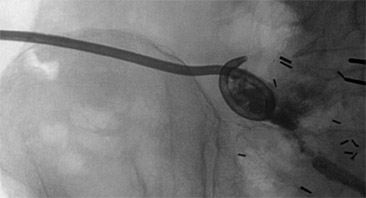
Abscess
Using imaging (ultrasound, CT scans) guidance IR’s can slip small tubes into an abscess (a pocket of infection inside the body), allowing it to safely drain outside of the body. Patients may avoid open surgery, or repeat surgery.
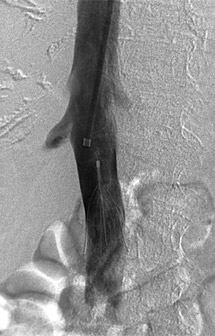
I.V.C. Filter
Blood clots may form in the leg veins of immobilized inpatients. They may travel to the lung arteries (pulmonary embolism) with fatal results. When blood thinners don’t work or patients can’t tolerate them, I.R. docs can place an inferior vena cava (I.V.C.) filter. This is a quick, non-surgical procedure in which a small catheter in slipped up the veins via a skin nick, a tiny wire-cone filter is pushed out the end of the catheter into the main vein in the abdomen. It remains as a filter barrier to clot migration. Some newer I.V.C. filters are designed to potentially be removed later, by snaring them out with another small catheter. At 90 days 90% can be removed, and by 6 months, about 50% can still be removed.
Kidney Blockage
A blockage in the ureter may occur, due to stones or cancer. Infection may follow. When urologists can’t clear it, interventional radiologests can pass tubes into the kidney (nephrostomy tubes) or even down the ureter to bypass the blockage.
Patients with “No Veins”
When no one can get I.V. or dialysis access in a sick patient, the interventional radiologists can! We are the experts at image-guided venous access.
Liver Failure
Liver failure may lead to severe internal bleeding or abdominal swelling. I.R.’s can save patients lives with a non-surgical procedure called TIPS.
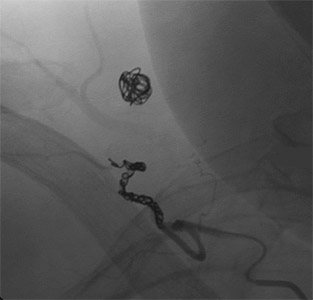
Internal Bleeding
I.R.’s can perform an angiogram (injection of x-ray dye into arteries through a long thin catheter) to find out where a patient’s internal bleeding is located and sometimes cure it by embolizing (injecting tiny plugs to block the bleeding artery). Bleeding in the stomach, intestines, uterus, or into muscles may be cured by embolization.
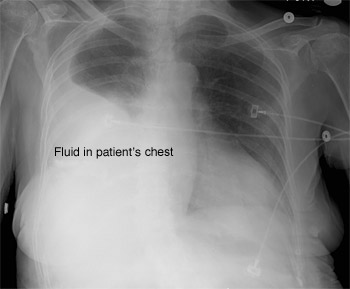
Thoracentesis / Paracentesis
Ultrasound can be used to localize abnormal fluid collections around the lung, or in the abdomen, and guide placement of a tiny needle or tube to sample them, or remove them altogether.
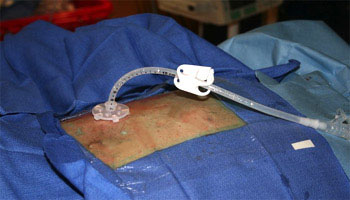
Gastrostomy Tube
Usually, these are placed by gastroenterologists, using a scope passed down into the stomach. A tube is ultimately passed into the stomach, through the abdominal wall, to feed patients who can’t eat, or are too sick. When they fail, interventional radiologists can usually succeed. We use imaging guidance, but don’t need to put a scope down into the stomach.
Similarly, IR’s can place a stent into a blocked colon, bile duct, or esophgagus to open it, when the GI docs fail.
There are many other procedures we perform in the inpatient setting.